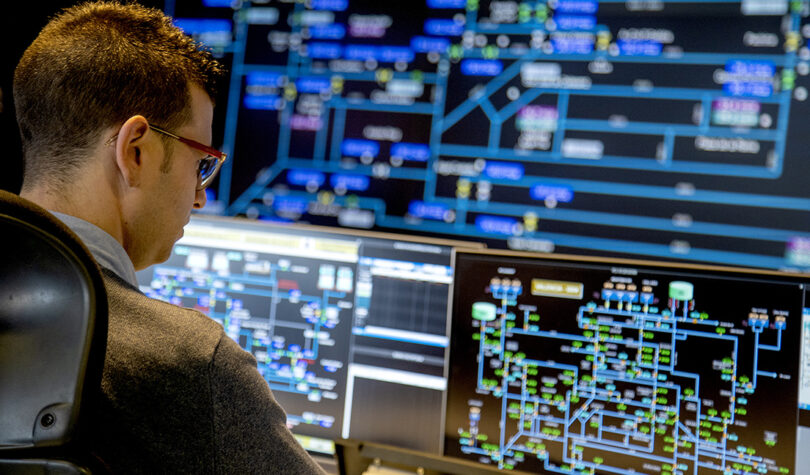In Latin America, where up to 60% of produced water is lost before reaching the consumer, the digital transformation of utilities — the water service providers — is no longer optional, but an urgent necessity.
As highlighted in the white paper “Keys to successfully implementing a digital water management platform”, the United Nations (UN) estimates that by 2050, around 5 billion people could be living in areas facing water scarcity if appropriate conservation and efficient management measures are not taken. In the face of this challenge, digitalization plays a key role as a vehicle for transition. However, moving from paper-based processes to smart sensors is no easy feat. The question remains: how can utilities shift from analog records and fragmented systems to integrated digital platforms without collapsing under the weight of the transformation?
6 KEYS TO ADDRESSING NON-REVENUE WATER (NRW)
During a recent webinar, Silvia Escamilla, a digital solutions expert in the water sector and Solutions Selling at Xylem Latin America, presented a roadmap based on successful case studies, outlining six keys to achieving effective and sustainable digitalization.
- Diagnosis: understanding the starting point
Before talking about artificial intelligence or big data, Escamilla emphasized the importance of understanding the initial situation, both internally and externally. One of the first hurdles faced by utilities in the region is non-revenue water (NRW), which refers to water that is produced but not billed. In Latin America, this accounts for over 35 million cubic meters daily — enough to supply 100 million people — lost through leaks, fraud, metering errors, and outdated operational management.
According to the Xylem Vue expert, “Losing water is not just a missed opportunity — the consequences are severe: economic losses, scarcity, social inequity, and environmental damage”. Recognizing the magnitude of the problem is the first step toward transformation.
- No data, no digitalization
For Escamilla, ‘what you can’t see, you can’t manage.’” Therefore, the second key to the digitalization process is the collection of reliable data.
To achieve this, utilities must have:
- Pressure and flow sensors
- Remote monitoring telemetry systems
- Integration of dispersed databases
This enables informed and timely decision-making.
- From Isolated Systems to Integrated Platforms
Another crucial aspect of the digitalization process is proper structuring. Many utilities operate with what Escamilla describes as a “spaghetti architecture”: multiple data sources lacking common links that could enable interoperability. The key, she explains, lies in building a unified digital ecosystem, where all data converge into a single platform capable of:
- Real-time visualization of networks and consumption.
- Predicting leaks before they occur through advanced analytics.
- Automatically generating work orders.
- Using intelligent assistants to recommend data-driven actions.
- Small starts, big impacts
One of the most common mistakes is assuming digitalization must be immediate and comprehensive, which it shouldn’t be. Escamilla instead proposed a modular and gradual strategy. “You don’t have to start with everything — begin where the data exists and where the impact will be greatest,” she advised.
One success story she shared was from Servicios de Agua y Drenaje de Monterrey (SADM), which “clearly illustrates this approach — they began with a pilot application and have now reduced NRW to 37% in some areas”.
- The real obstacles: people and budget
When asked about the main barriers to digitalization, Silvia Escamilla was clear: while the technology is available, the biggest challenges are human and financial.
- Resistance to change: shifting mindsets is often harder than securing funding.
- Lack of historical data: this complicates project development.
- Budget constraints: although funding mechanisms exist — such as Mexico’s National Infrastructure Fund (FONADIN) or org — financial limitations remain a hurdle.
- Cybersecurity and sustainability: beyond hardware
To conclude, Escamilla stressed that “digitalizing without protecting is like building without foundations.” Cybersecurity, she emphasized, must be integrated from the design phase. Additionally, she underscored that digital transformation is not just about operational efficiency, but also “a tool to ensure sustainability, transparency, and water equity”.
The digitalization of utilities in Latin America is urgent — but also achievable. Countries like Mexico, Chile, Colombia, and Brazil already have success stories that prove it is possible to move from paper to sensors without collapsing in the process, given the right strategy, political will, and the right partners.
In this context, Silvia Escamilla concluded that while the journey is indeed “complex,” the importance of the process cannot be overstated: “Every drop saved, every leak detected, and every data point recovered is an investment in a fairer, more efficient, and more resilient water future for the region”.








